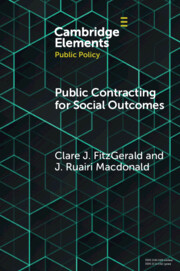Close ties between government authorities and private firms are often the object of suspicion, but a systematic understanding of when they arise is still missing. This article uses machine learning tools to analyze a large dataset of public contracts from across Europe, in order to identify the conditions under which close connections, defined both in terms of repeated interaction, as well as geographical dispersion, appear. Previous theoretical results suggest that close ties should emerge as an enforcement mechanism in settings characterized by weak outside enforcement, such as those involving corruption. Results from random forest models show support for this hypothesis, along with identifying other structural determinants of the outcome. The most striking finding is that even after accounting for numerous potential confounders, major differences in terms of average diversity levels between countries persist, and these differences map onto an indicator of governance quality and corruption, but not at all on income per capita. These findings point to the centrality of the structure of interactions between private and public actors for understanding governance outcomes.


